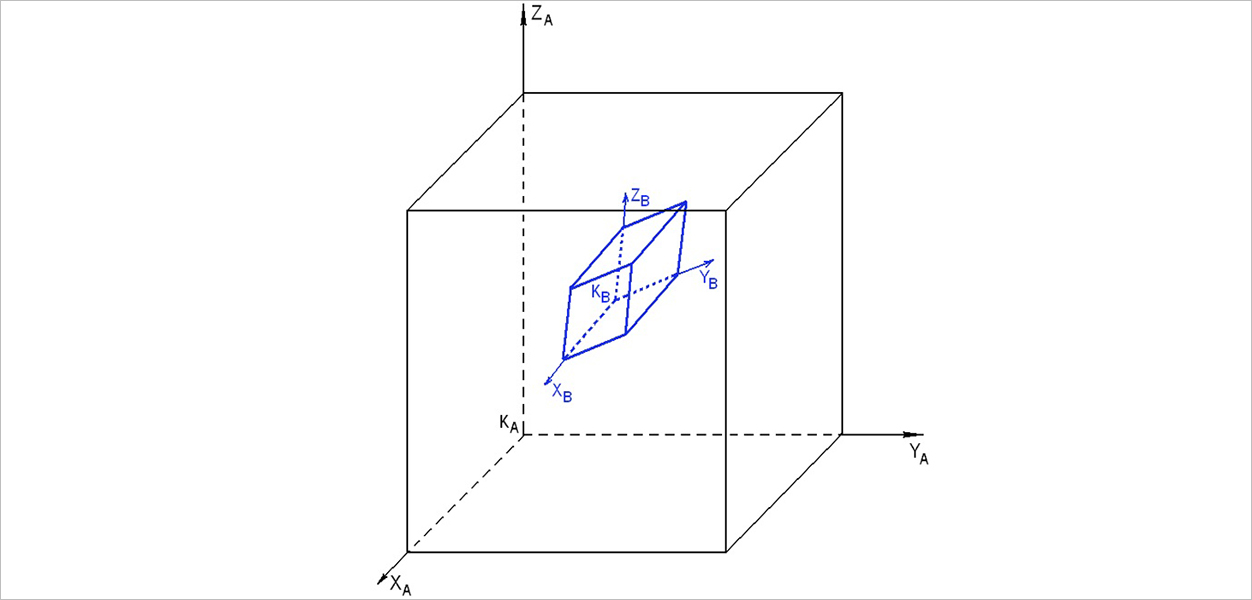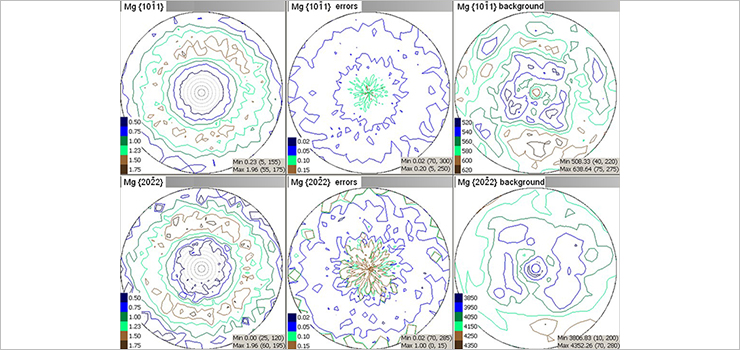JINR tested new efficient approach to studying magnesium alloys
News, 05 May 2023
Scientists of the Laboratory of Neutron Physics JINR measured the crystallographic texture of magnesium alloys. It will help to understand how to make the alloy more ductile and less breakable. Scientists carried out the study at the SKAT Diffractometer at JINR using neutrons. The approach has shown greater efficiency in comparison with traditional methods based on X-ray radiation. By fully examining the texture of samples, JINR scientists will help manufacturers create innovative alloys of non-ferrous metals with certain physical characteristics and more convenient for processing.
The SKAT Facility is located on channel 7A of the IBR-2 Research Reactor. It is a multi-detector diffractometer having three independent detector systems with different scattering geometries. The SKAT Texture Diffractometer makes it possible to study the crystallographic texture of various materials. Scientists used it to examine not only metals, but also rocks and biological samples, i.e. shells of modern and fossil molluscs.
 SKAT Texture Diffractometer and its location scheme
SKAT Texture Diffractometer and its location scheme
“Magnesium alloys are widely used, these are the materials of the future. Alloy wheels and laptop bodies are made of them. They are also used in the space industry. In terms of price, such an alloy is slightly more expensive than aluminium. In terms of strength, it is comparable to titanium,” an FLNP JINR senior researcher Dmitry Nikolaev noted. He said that researchers study magnesium alloys in research centres around the world; separate conferences are dedicated to them. However, difficulties with the processing of magnesium alloys arise. The material can tear during punching, which is used in industry as one of the cheapest types of production. The punching of alloys is hindered by the sharp crystallographic texture of magnesium and its alloys, which results from the rolling of the metal sheet.
The crystallographic texture is the distribution of crystallite orientations in a polycrystalline sample. The purpose of the research is to make the crystallite orientations in the product more chaotic. To achieve this, scientists either add impurities to magnesium or adjust the temperature at which sheets are made. With each such change, it is necessary to measure the crystallographic texture in the entire material.
 Crystallite orientation in the crystal
Crystallite orientation in the crystal
In this case, research at FLNP JINR using neutrons at the SKAT Facility has advantages over the traditional technique based on X-ray diffraction. In particular, neutrons have a much greater penetrating power. “X-ray radiation penetrates into the material to a depth of up to 0,1 mm, while neutrons reach centimetres. X-ray facilities allow studying only the near-surface layer of the samples. However, when examining large objects, scientists are interested in deeper layers of material,” commented Dmitry Nikolaev.
FLNP scientists measured the so-called complete pole figures in the material samples by using the method of time-of-flight neutron diffraction. The method is based on the neutron elastic scattering. These figures show the connection of the external coordinate system of the sample with that of the crystal (its orientation). The pole figures are obtained by mathematical processing from the neutron spectra, which are registered by the SKAT Facility. Using the traditional method of X-ray scattering, only incomplete pole figures can be constructed.
 Crystallographically equivalent pole figures of magnesium alloy
Crystallographically equivalent pole figures of magnesium alloy
The method of time-of-flight neutron diffraction was developed at JINR in 1962 during experiments at the IBR Reactor, and hence became widespread around the world.
The report of senior researchers of the Laboratory of Neutron Physics JINR Dmitry Nikolaev and Tatiana Lychagina on the research of the crystallographic texture of magnesium alloys was recognised as the best at the 15th All-Russian “TestMat” conference on testing and research of the materials properties. Dmitry Nikolaev said that practically the recognition of the report as the best opens up prospects for cooperation with the conference organizer, the All-Russian Institute Of Aviation Materials (VIAM, part of the NRC “Kurchatov Institute”). “Now we are discussing possible joint experiments. While the IBR-2 Reactor is halted, we can plan future experiments and prepare samples for them,” the scientist explained.